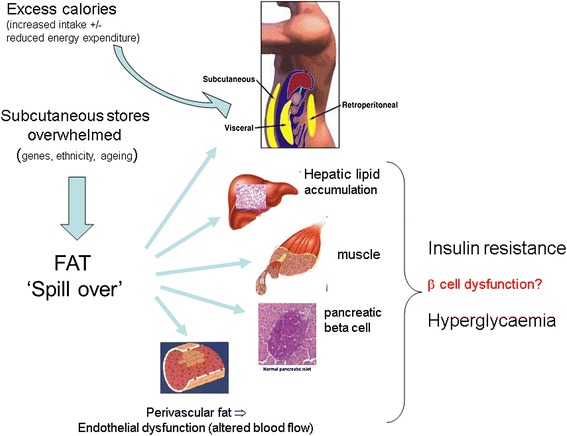Figure 2.

Simple concept of ectopic fat and development of insulin resistance and frank diabetes. A simple conceptual illustration on the development and location of ectopic fat in individuals once they have ‘overwhelmed’ their ability to store safe subcutaneous fat. Certain factors such as sex (females have greater storage capacity), genetics (with family history of type 2 diabetes mellitus (T2DM) as a broad proxy measure), ethnicity (for example, South Asians) and ageing appear to have relevance to an individual’s ability to store fat subcutaneously. Other factors, such as smoking, may also be relevant but more data are needed to examine this. In temporal terms, it may be that liver fat accumulation occurs closer to the time of development of T2DM whereas muscle insulin resistance is a more proximal development. Perivascular fat may contribute to vascular dysfunction via a process of adverse vasocrine signalling, leading in turn to impaired nutrient blood flow; that is, vascular insulin resistance. Finally, some recent evidence indicates that excess fat may also accumulate in the pancreas to contribute to β-cell dysfunction, and thus development of T2DM. Such excess pancreatic fat appears reversible, and could contribute to diabetes resolution even in some patients with T2DM who are on insulin.
